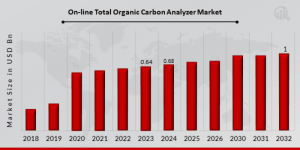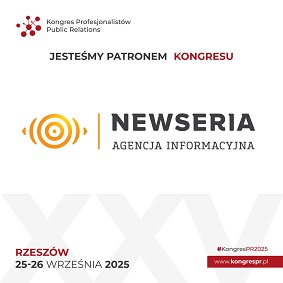On-line Total Organic Carbon Analyzer Market poised for growth with 4.98% CAGR by 2032 | Xylem, Metrohm, SUEZ, Shimadzu
On-line Total Organic Carbon Analyzer Market grows with rising water quality monitoring needs across industries.
On-line Total Organic Carbon (TOC) Analyzer Market Overview and Analysis
The On-line Total Organic Carbon (TOC) Analyzer market is a rapidly growing segment of the environmental testing and monitoring industry. These analyzers are primarily used to measure the total organic carbon content in water and wastewater samples, providing crucial data for industries involved in environmental testing, water treatment, pharmaceuticals, and food & beverages, among others. By offering real-time, continuous monitoring capabilities, on-line TOC analyzers enhance operational efficiency and regulatory compliance by ensuring that industrial processes are running within the prescribed limits for organic pollutants.
As industries are becoming more focused on sustainability, water conservation, and maintaining environmental standards, on-line TOC analyzers are witnessing an increased demand. These devices are critical for industries like pharmaceuticals, water treatment plants, and chemical processing, where the quality of water is closely monitored for various organic contaminants. This market has seen a significant evolution, with new technological advancements improving the accuracy and efficiency of these analyzers.
Get Free Sample PDF Brochure: https://www.marketresearchfuture.com/sample_request/5963
Key Companies in the On-line Total Organic Carbon Analyzer market include
Xylem Inc.
SUEZ
Hach Company
Shimadzu Corporation
Mettler-Toledo International Inc.
Metrohm AG
Elementar Analysensysteme GmbH
LAR Process Analyzers AG
Zhejiang Tailin BioEngineering Co. Ltd.
Comet Analytics Inc.
Market Trends Highlights
One of the key trends in the On-line Total Organic Carbon Analyzer market is the shift toward automation and real-time monitoring. Traditionally, TOC measurements were conducted using laboratory-based methods, which involved manual sample collection and analysis. However, with the advent of on-line analyzers, industries can now continuously monitor TOC levels in real-time, reducing the risk of human error and providing immediate results for better decision-making. These analyzers offer features like self-cleaning, automatic calibration, and advanced data logging, which make them highly efficient and user-friendly.
Another notable trend is the increasing adoption of digital and IoT-enabled devices in water quality monitoring systems. The integration of smart sensors and wireless communication technology with on-line TOC analyzers is becoming more common. These innovations allow users to remotely monitor the performance of analyzers, optimize system parameters, and receive timely alerts about equipment malfunctions or abnormal readings.
Market Drivers
Stringent Environmental Regulations: Increasing environmental regulations and governmental policies aimed at water quality control are one of the major drivers of the on-line TOC analyzer market. The stringent standards set by organizations like the EPA (Environmental Protection Agency) and local authorities require industries to monitor and treat wastewater effectively. On-line TOC analyzers are crucial tools to meet these compliance requirements, as they provide continuous, real-time measurements that help ensure safe discharge of treated water.
Rising Demand for Water Purification: As the global population grows and freshwater resources become scarcer, there is a growing demand for water treatment technologies. On-line TOC analyzers play a significant role in ensuring the treated water meets the required standards for consumption and discharge. Industries such as pharmaceuticals, food and beverage, and petrochemicals, all of which require ultra-pure water for their processes, are major consumers of these analyzers.
Buy Now Premium Research Report: https://www.marketresearchfuture.com/checkout?currency=one_user-USD&report_id=5963
Market Restraints
High Initial Cost: While the long-term benefits of on-line TOC analyzers are clear, the high initial cost can be a significant barrier for small and medium-sized enterprises. The upfront investment in equipment, installation, and training can be a challenge for companies with limited budgets. Additionally, the complex nature of these systems may require specialized technicians for operation and maintenance, further adding to the overall cost.
Technical Complexity: Although on-line TOC analyzers offer a range of benefits, their technical complexity can be a challenge for some users. Operators need proper training to manage these sophisticated systems effectively. Mismanagement or improper calibration can lead to inaccurate readings, which can affect the integrity of water treatment processes and result in compliance issues.
Market Segmentation
The on-line TOC analyzer market can be segmented based on product type, application, and geography:
By Product Type:
Bench-top TOC Analyzers: These are compact, portable devices typically used in laboratory settings. Although they are highly accurate, they are not designed for continuous, on-line monitoring. They are, however, widely used for research and development and in industries where occasional testing is sufficient.
On-line TOC Analyzers: These are the most commonly used devices in industries requiring continuous monitoring. They are designed for integration with existing systems in wastewater treatment plants, chemical processing units, and other large-scale industrial applications.
By Application:
Water and Wastewater Treatment: The largest application segment, as industries require constant monitoring of water quality to ensure it meets environmental standards.
Pharmaceutical Industry: The pharmaceutical sector needs ultra-pure water for manufacturing processes, and on-line TOC analyzers ensure the water meets the required purity levels.
Food and Beverage Industry: Monitoring the TOC levels in water used for food production and processing is critical to meet health and safety standards.
By End-User Industry:
Municipalities and Industrial Water Treatment Plants: These end-users are responsible for ensuring the quality of water and wastewater for the community.
Pharmaceuticals and Chemicals: Industries where stringent water quality standards are vital.
Food and Beverages: Ensuring the quality of water used in production is a key concern.
Browse In-depth Market Research Report: https://www.marketresearchfuture.com/reports/on-line-toc-analyzer-market-5963
Regional Analysis
North America: North America, particularly the United States, is a leading market for on-line TOC analyzers due to stringent environmental regulations and a well-established water treatment infrastructure. The demand for real-time water quality monitoring solutions in various industries, including pharmaceuticals and chemicals, is driving the market in this region.
Europe: Europe is another significant market for on-line TOC analyzers, driven by stringent EU regulations regarding water quality. Countries like Germany, the UK, and France have well-established industrial sectors that require continuous water quality monitoring, particularly in wastewater treatment plants.
Asia-Pacific: The Asia-Pacific region is expected to see the highest growth rate in the on-line TOC analyzer market. Rapid industrialization, urbanization, and increasing environmental awareness in countries like China, India, and Japan are driving the demand for water treatment technologies. The region’s need for reliable, real-time water quality monitoring solutions is set to fuel the growth of the market.
Latin America and the Middle East: These regions are witnessing a steady rise in the adoption of on-line TOC analyzers due to increasing industrial activities and water scarcity issues. Governments are implementing stricter regulations, encouraging the use of advanced technologies for water monitoring.
More Related Reports:
Building Automation Control Systems Market: https://www.marketresearchfuture.com/reports/building-automation-control-systems-market-22593
Centrifugal Compressors Market: https://www.marketresearchfuture.com/reports/centrifugal-compressors-market-22597
Diamond Core Drilling Market: https://www.marketresearchfuture.com/reports/diamond-core-drilling-market-22603
Dumbwaiter Lifts Market: https://www.marketresearchfuture.com/reports/dumbwaiter-lifts-market-22609
Electric Arc Furnaces Market: https://www.marketresearchfuture.com/reports/electric-arc-furnaces-market-22619
Green Transformer Market: https://www.marketresearchfuture.com/reports/green-transformer-market-22589
Humor as Healing: The Usefulness of Hippopotamus Delivers Joy for Trying Times
Modernizing Whole-Home Entertainment Systems: Key Considerations for Today’s Homeowners
Austin Disaster Relief Network Provides Ongoing Relief and Long-Term Recovery Support Across Central Texas Flood Zones
Więcej ważnych informacji
 Jedynka Newserii
Jedynka Newserii

 Jedynka Newserii
Jedynka Newserii

Konsument

Grupa nowych biednych emerytów stale się powiększa. Ich świadczenie jest znacznie poniżej minimalnej emerytury
Przybywa osób, które z powodu zbyt krótkiego czasu opłacania składek pobierają emeryturę niższą od minimalnej. Tak zwanych nowych biednych emerytów jest w Polsce ok. 430 tys., a zdecydowaną większość grupy stanowią kobiety – wskazują badania ekspertów Instytutu Pracy i Spraw Socjalnych. W ich przypadku krótszy okres składkowy zwykle wynika z konieczności opieki nad dziećmi lub innymi osobami w rodzinie. Wśród innych powodów, wymienianych zarówno przez panie, jak i panów, są także praca za granicą lub na czarno oraz zły stan zdrowia.
Media i PR
M. Wawrykiewicz (PO): Postępowanie z art. 7 przeciw Węgrom pokazało iluzoryczność tej sankcji. Unia wywiera naciski poprzez negocjacje nowego budżetu

Przykład Węgier pokazał, że procedura z artykułu 7 traktatu o UE o łamanie praworządności nie ma mocy prawnej z powodu braku większości, nie mówiąc o jednomyślności wśród pozostałych państw członkowskich. Negocjacje nowego budżetu UE to dobry pretekst do zmiany sposobu części finansowania z pominięciem rządu centralnego. Czerwcowy marsz Pride w Budapeszcie pokazał, że część społeczeństwa, głównie stolica, jest przeciwna rządom Viktora Orbána, ale i na prowincji świadomość konsekwencji działań Fideszu staje się coraz większa przed przyszłorocznymi wyborami.
Firma
Blockchain zmienia rynek pracy i edukacji. Poszukiwane są osoby posiadające wiedzę z różnych dziedzin

Zapotrzebowanie na specjalistów od technologii blockchain dynamicznie rośnie – nie tylko w obszarze IT, ale również w administracji, finansach czy logistyce. Coraz więcej uczelni wprowadza programy związane z rozproszonymi rejestrami, które wyposażają studentów w umiejętności odpowiadające wymogom rynku.
Partner serwisu
Szkolenia

Akademia Newserii
Akademia Newserii to projekt, w ramach którego najlepsi polscy dziennikarze biznesowi, giełdowi oraz lifestylowi, a także szkoleniowcy z wieloletnim doświadczeniem dzielą się swoją wiedzą nt. pracy z mediami.


![Nestlé w Polsce podsumowuje wpływ na krajową gospodarkę. Firma wygenerowała 0,6 proc. polskiego PKB [DEPESZA]](https://www.newseria.pl/files/1097841585/fabryka-nesquik_1,w_85,r_png,_small.png)






.gif)

 |
| |
| |
|